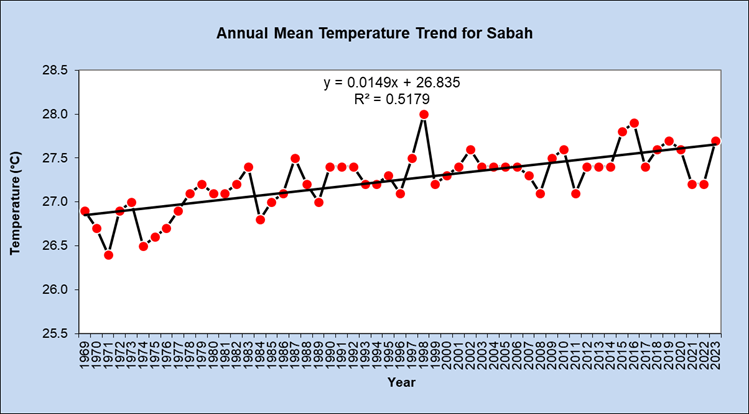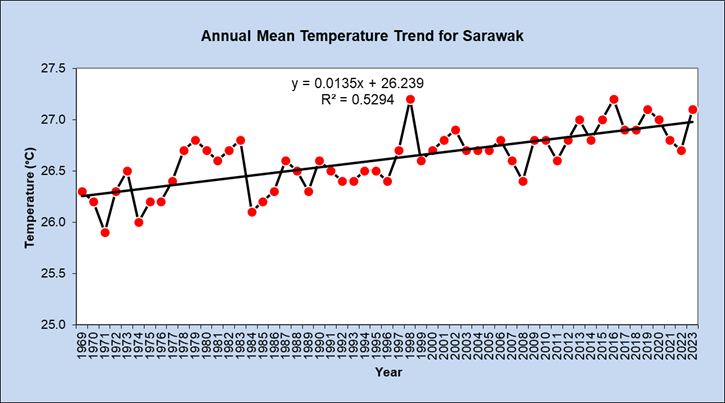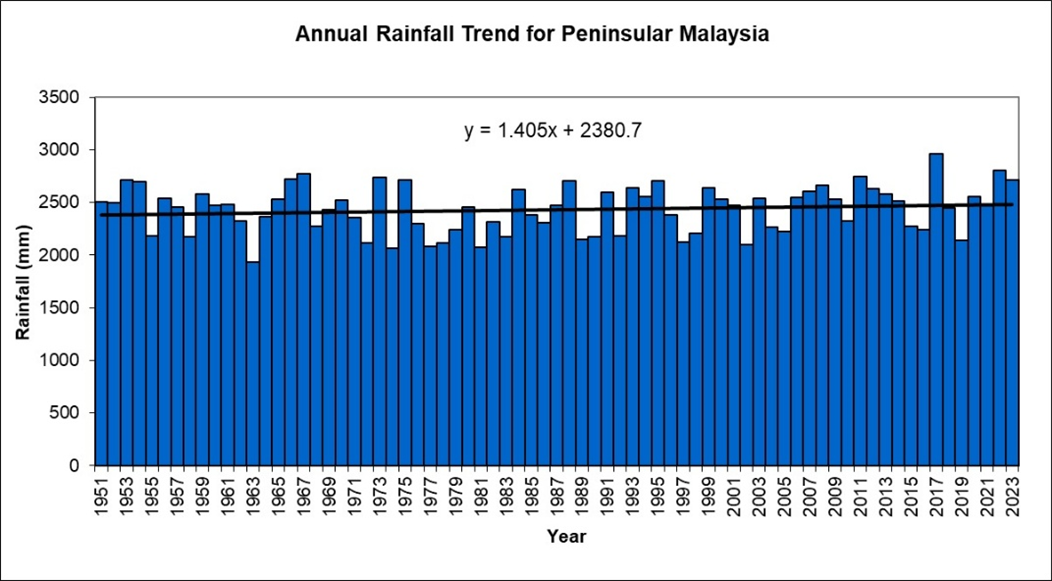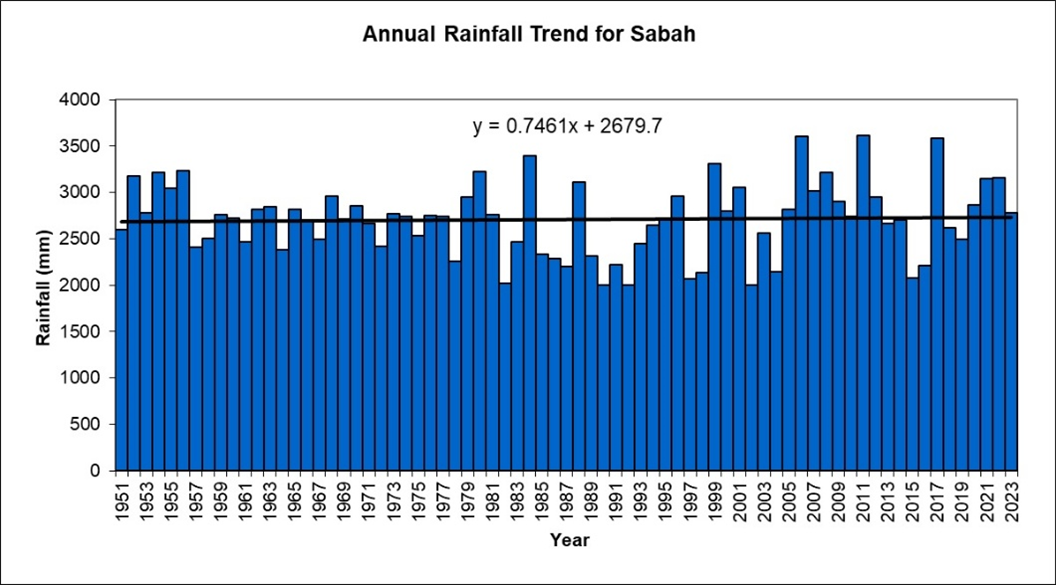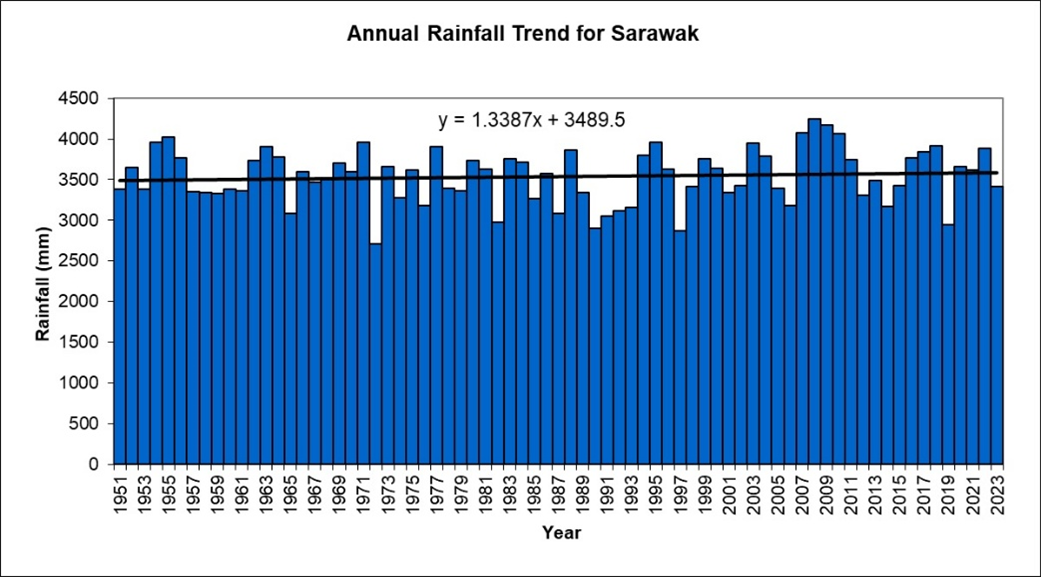Climate Change
Climate change is the long-term changes in weather patterns that are caused by natural or human activities (anthropogenic) and can be observed at a global or regional or national level. Significant weather changes resulting from climate change include rising temperature, increases in extreme weather events, rainfall intensity, sea level rise, reductions in ice extent, ocean heat content and wind patterns, which significantly impacts the life on Earth.
Climate change can be modulated by both naturally and human activities. The influence of these natural factors on climate change occurs slowly and over a long period of time. Natural factors include:
Solar Radiation: Significant changes in solar radiation due to variation of solar cycle can leads to global temperature changes.
Volcanic Eruptions: A large volcanic eruption that releases ash and gases such as sulfur dioxide and carbon dioxide into the Earth's atmosphere, blocking sunlight and causing a temporary cooling effect.
Sea Surface Temperature (SST) Changes: Changes in SST and ocean-atmosphere interactions influence weather patterns and temperature on Earth, for example due to El Niño/La Niña phenomena.
Climate change caused by human activities (anthropogenic) can change the composition of the atmosphere and lead to global warming. These human-caused emissions have significantly accelerated the effects climate change, manifested in extreme weather events that can impact the ecosystems and even human life. Contributing factor from anthropogenic activities includes:
Burning of Fossil Fuel: The combustion of coal, oil, and natural gas releases greenhouse gases (GHG) such as carbon dioxide (CO2) and carbon monoxide (CO) into the atmosphere. These gases act as a blanket to trap heat, and causing atmospheric temperature to increase.
Deforestation and land use changes: Large-scale deforestation for urban expansion or for agricultural purposes, trees are cut down and forests are cleared. This reduces the ability of forests to absorb carbon dioxide (CO2), resulting in higher concentrations of greenhouse gases in the atmosphere.
Impacts of Climate Change
Global temperature rise leading to global warming.
Iceberg melting and thermal expansion causes increase in sea level, threatening the low-lying areas and coastlines.
Frequent extreme weather events such as floods, droughts, and heatwaves.
Loss of habitats and destruction of biodiversity, threatening the ecosystems.
Disruption to agriculture and food sources due to changing weather patterns.
Threats to human health through respiratory related illness due to poor air quality and heatstroke due to extreme heat.
Economic losses due to increasing adaptation cost, recovery cost, and reduction in country GDP.
Climate Change Monitoring In Malaysia
Monitoring climate change in Malaysia requires collaboration between government agencies, researchers and the public to understand and address the impacts of climate change. In MET Malaysia, the monitoring process includes the collection of (long-term) data, such as temperature and rainfall. These datasets are analysed to determine the climate trend in the country. Based on the datasets from 1969 to 2023, there was a significant increase in average temperature in Peninsular Malaysia, Sabah, and Sarawak, with an increase of 0.24°C, 0.14°C and 0.13°C per decade, respectively. Based on annual rainfall amount datasets from 1951 to 2023, a slight increase in the total amount is observed. The output of the analysed data is presented as graphs and labelled as annual mean temperature and annual rainfall trend as indicated below:




